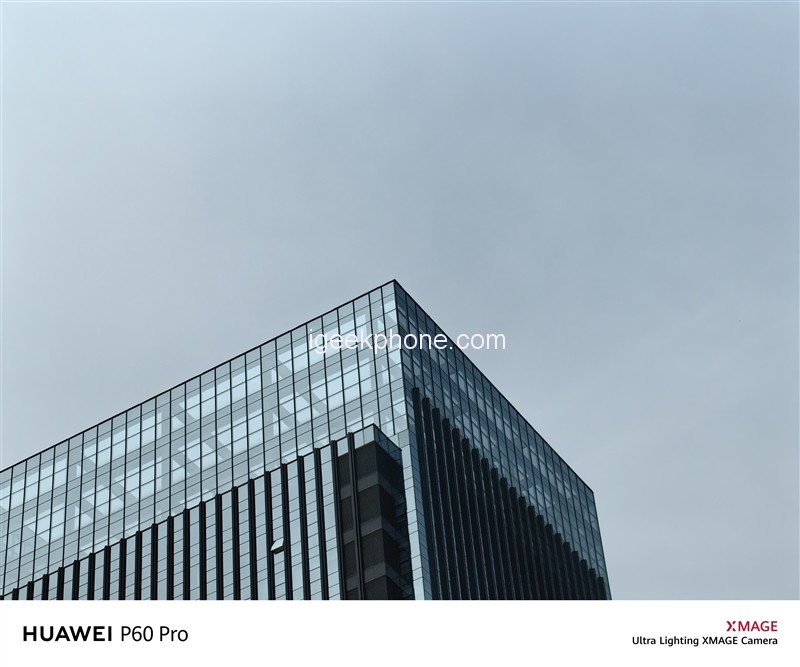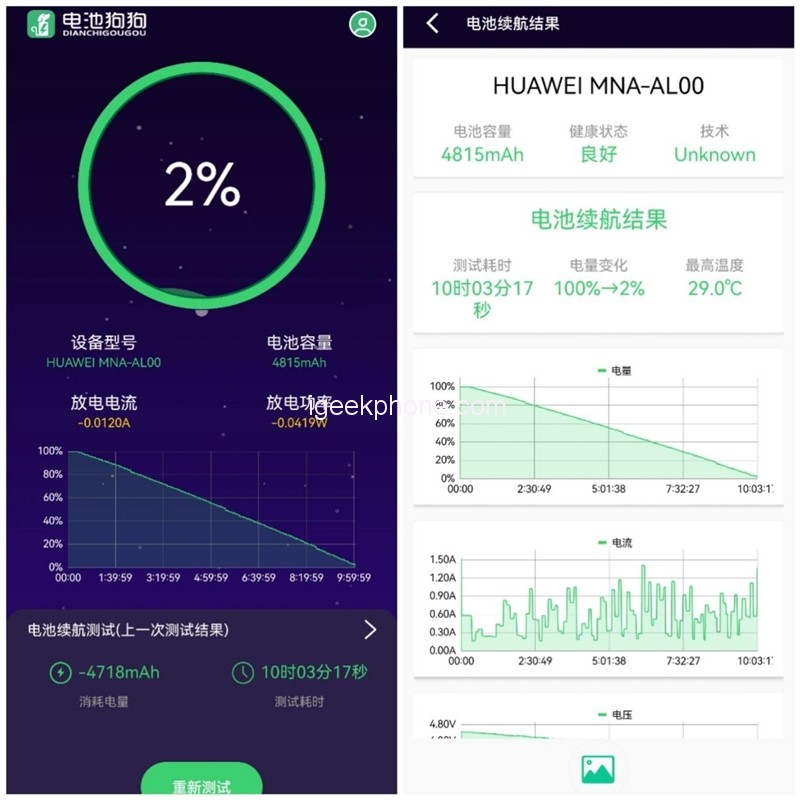Whenever Huawei launches a new flagship product, it upsurges in the digital technological circle. The first quarter of 2023 is about to pass, and Huawei’s new spring flagship product launch is on schedule. The much-watched Huawei P60 series mobile phones have finally appeared. Since the release of the Huawei P50 series in 2021, with the XD Fusion image engine and the new XD Optics computing optics, the final effect of 1+1>2 has been achieved without extreme optical hardware. Huawei has also been striving for perfection in imaging. After a year and a half, the just-released Huawei P60 Pro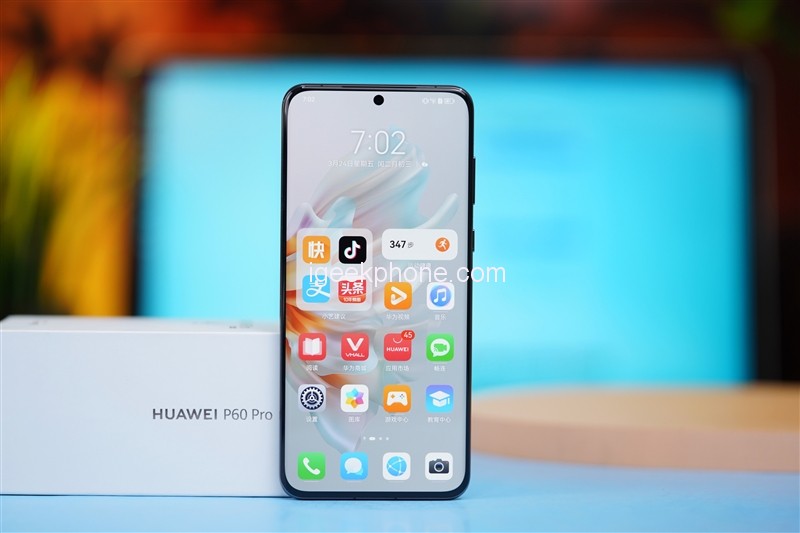 has a new super-concentrating XMAGE imaging system. Through super-concentrating custom hardware, it changes the way light is converged. Realize the full-link upgrade of optical-mechanical-computer-computing, bringing a revolutionary video experience.
has a new super-concentrating XMAGE imaging system. Through super-concentrating custom hardware, it changes the way light is converged. Realize the full-link upgrade of optical-mechanical-computer-computing, bringing a revolutionary video experience.
1. The industry’s first super-concentrating primary camera, the light input far exceeds the 1-inch outsole
We need to know that increasing the amount of light entering the lens is not only a way to increase the photosensitive area of the sensor but it can also be improved by increasing the aperture and changing the filter.
In the Huawei P60 Pro, the optical system of the primary camera has been redesigned. By changing the filter and introducing a large aperture and high light transmission lens group, the full-link light input of the optical system has been improved.
Combined with the unique characteristics of the RYYB filter, it can significantly reduce the problem of light loss and further bring a higher amount of incoming light.
Coupled with the ten-speed variable aperture of F1.4~F4.0, the lens can automatically switch to the appropriate gap according to the changes in the shooting environment light. With the blessing of various new technologies, Huawei P60 Pro has brought the industry’s most significant amount of light. The primary camera has a photosensitive capability far exceeding the 1-inch outsole CMOS.
2. The industry’s first ultra-concentrating night vision telephoto camera The industry’s largest F2.1 aperture periscope telephoto
The telephoto lens of the Huawei P60 Pro achieved a revolutionary breakthrough for the first time. It adopts the industry’s first super-concentrating night-vision telephoto camera and adds a super-concentrating telephoto lens group to the telephoto camera, which can gather more light.
And this telephoto lens also adopts RYYB ultra-sensitive sensor. With the industry’s giant F2.1 aperture lens, the amount of light entering the seven telephoto lenses has also reached the industry’s highest.
3. The world’s first mass smartphone that supports two-way Beidou satellite messages
Last year’s Huawei Mate 50 Pro series integrated Beidou satellite information for the first time. When we are in no man’s land, even if the mobile phone has no signal, we can still use the mobile phone to send messages to the outside world and support multiple locations to generate trajectory maps.
In the P60 Pro this year, Huawei has made another breakthrough. It is the first to support the two-way Beidou satellite message on the mobile phone. That is to say, we can send messages to the outside world and receive notifications from the external receiver in the Huawei P60 Pro mobile phone. , making up for the previous shortcomings.
Design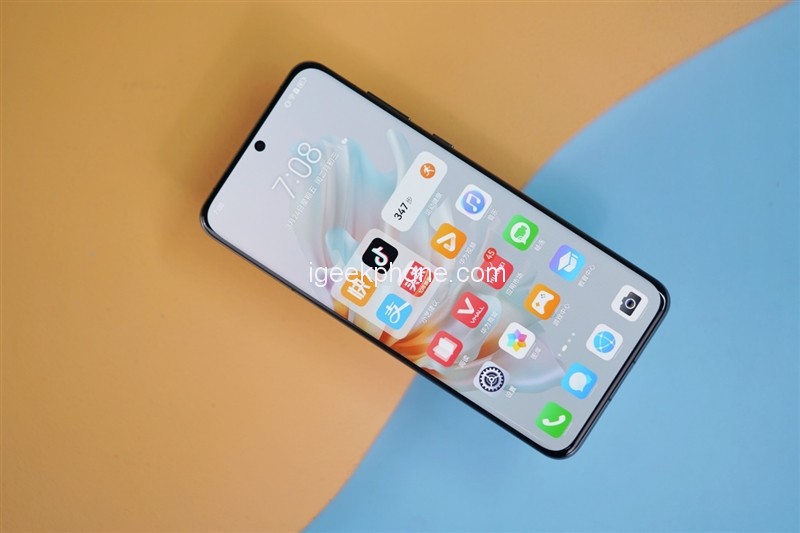
The front of the Huawei P60 Pro uses a 6.67-inch OLED screen. Its most significant upgrade is to support an adaptive refresh rate of 1-120Hz. This is also the first series of Huawei mobile phones to use a dynamic refresh rate. The touch sampling rate of 300Hz also ensures the sliding chirality and supports 1440Hz high-frequency PWM dimming.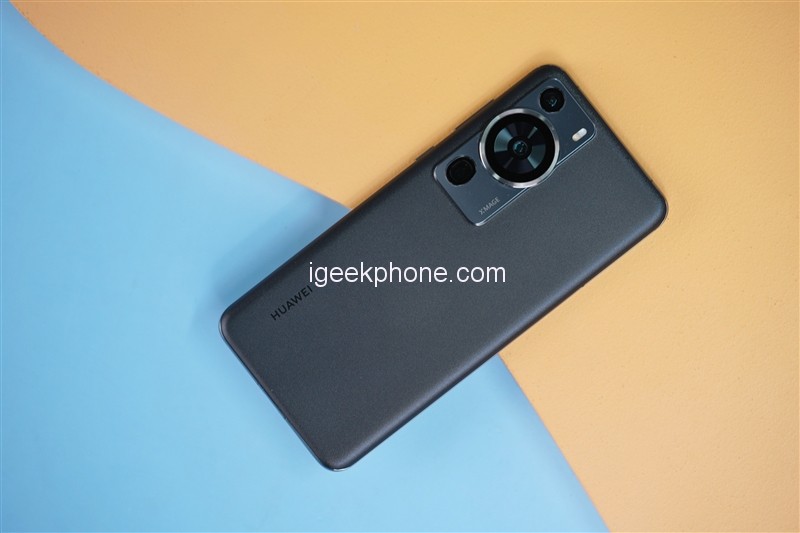
The screen of the Huawei P60 Pro presents a slight curvature around the screen, and the overall look and feel are tenser, making the phone appear slimmer. Swiping up from the bottom does not have that cutting feeling, bringing a more comfortable grip and precise control experience. The camera on the front of the phone is located in the middle, and the 13-megapixel wide-angle camera has an aperture of F2.4.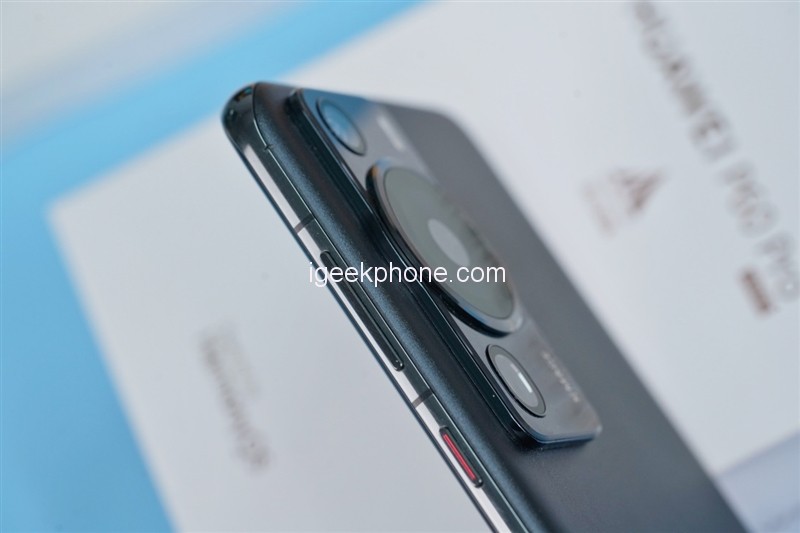
The bottom of the fuselage adopts a very narrow chin, and the look and feel of the mobile phone are also improved. The Huawei P60 Pro we got is a feather sand black color. The back of the fuselage adopts this feather gauze glass with a sandblasting process. It looks shimmering visually, feels silky and smooth, and has excellent anti-fingerprint and anti-oil stains. Effect.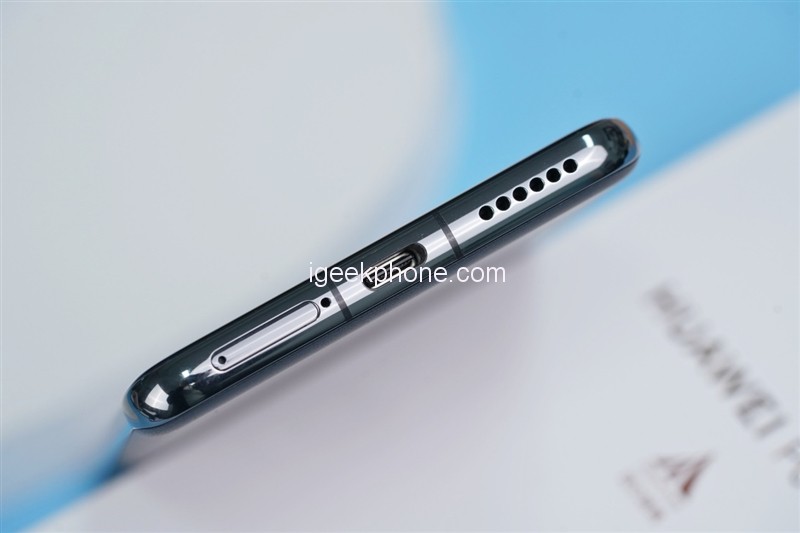
The three-camera module on the top of the back continues the classic family-style design language. The most commonly used primary camera is surrounded by an eye-catching big ring through the horizontal arrangement of the camera modules. The bottom is embedded with a square module. The upper and lower two are, Ultra wide-a, angle, and periscope telephoto lenses. In the lower right corner of the square module is its own XMAGE image logo, and in the upper right corner is a single LED fill light and a rear light sensor. The phone’s back side is the volume and power buttons, and the classic red strip decoration is attached to the power button.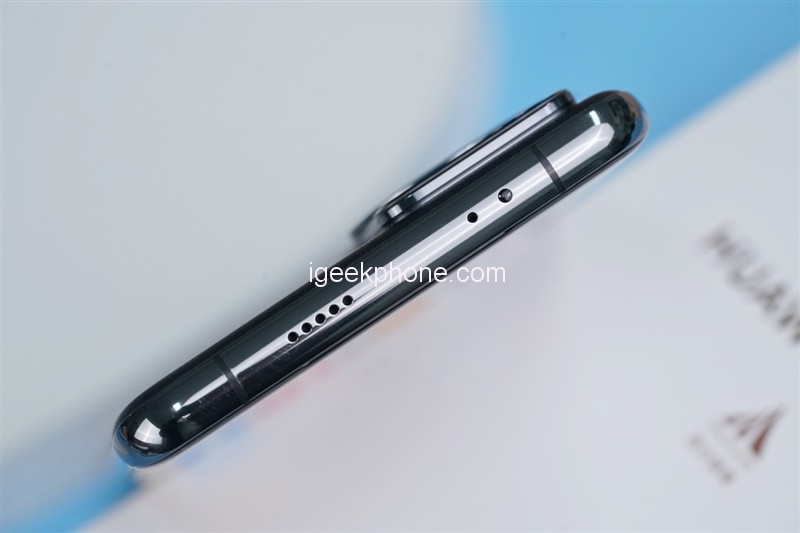
The opening for the secondary speaker is on the top of the fuselage, and to the right are the noise-canceling microphone and the infrared remote control sensor. At the bottom are the main speaker, Type-C charging earphone 2-in-1 interface, microphone, and SIM card slot. The accompanying accessories include Huawei wired fast charging kit, transparent silicone mobile phone case, mobile phone warranty card, mobile phone quick start guide, and SIM card needle.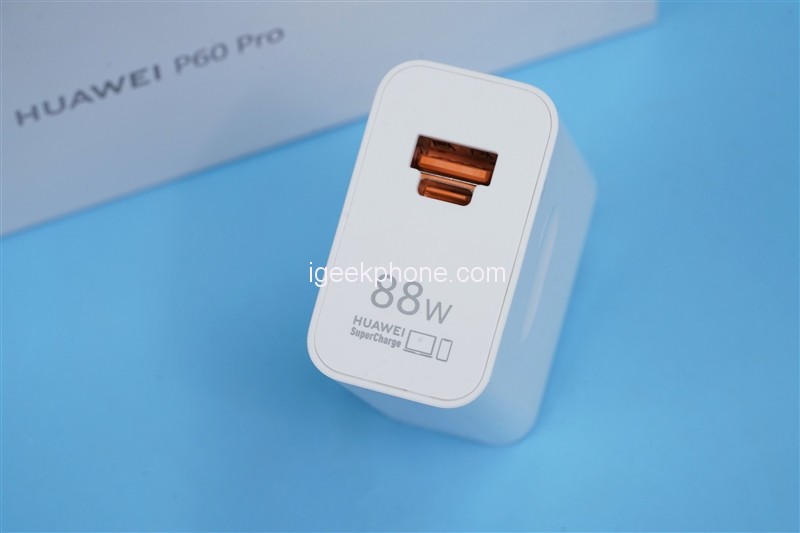
The Huawei super fast charging adapter supports a power output of up to 88W and adopts a USB-A+Type-C dual-port design. It also helps fast charging for Huawei tablets, Huawei notebooks, and other family devices.
Cameras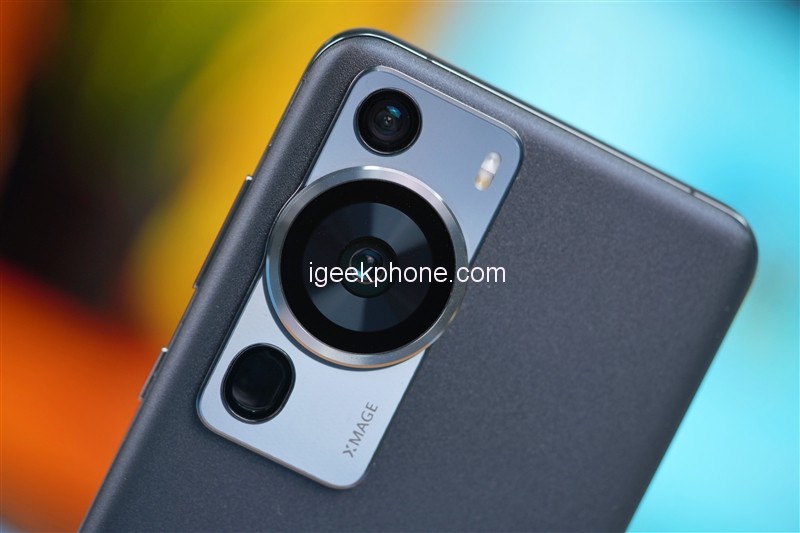
The primary lens of the Huawei P60 Pro uses a 48-megapixel super-concentrating camera equipped with F1.4~F4.0 ten-stop aperture adjustment, a laser focus sensor, and supports OIS optical image stabilization.
Inside the primary lens, Huawei still follows the tradition of the RYYB photosensitive array and, at the same time, introduces a group of large-aperture high-transmittance lenses, which brings the highest equivalent full-frame aperture of F5.41, far exceeding all previous flagships, cell phone.
The 48-megapixel super-focus night vision telephoto camera, RYYB photosensitive array, and a super-focus telephoto lens group are added inside the lens, which can gather more light. The aperture of F2.1 is also much larger than that of other flagship phones. The telephoto night scene shooting ability of the P60 Pro has been dramatically improved.
At the same time, this telephoto lens supports 3.5x optical zoom and up to 100x digital zoom and can shoot up to 35x ultra-macro images.
The telephoto lens will cause a significant lens shake problem when shooting distant objects. For this reason, the Huawei P60 Pro solution is to install a three-axis displacement anti-shake sensor inside the telephoto lens. This sensor can achieve X-Axis, Y-axis, and Z-axis act in three directions simultaneously in exchange for a significant improvement in optical image stabilization performance.
Next, we will distinguish according to the camera and show the image performance of the Huawei P60 Pro through actual samples.
Using the primary camera of the Huawei P60 Pro, the pictures taken in daytime scenes are clean and neat. With the variable aperture, the Huawei P60 Pro can show the object’s original color in various light environments, and the pictures taken give the first impression that the image is transparent and beautiful, with clear light and dark.
Especially the last group of flowers was shot in a backlit scene. In the case of mixed colors, the tolerance can still reach a good state. At the same time, compared with other flagship phones, there is no whitish phenomenon.
Due to the addition of a variable aperture, the lens’s aperture will change with ambient light. In the night scene, the white balance performance is just right. When facing very close bright objects, the light can be controlled in place, and there is no glare. Phenomena such as flare, halo, etc., especially in the last photo, contain the glow of the lights upstairs in the hot pot restaurant very well. The picture has rich layers and a more three-dimensional effect.
Telephoto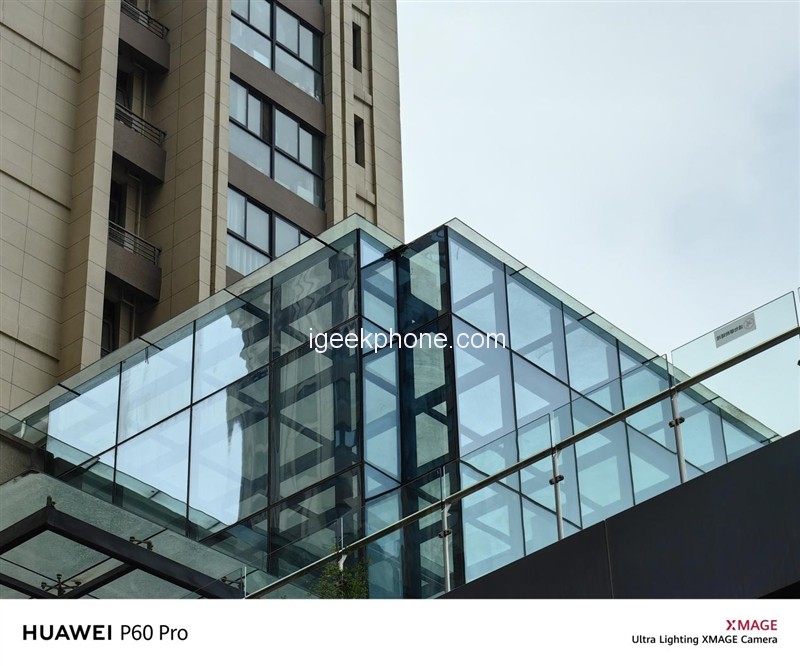
Compared with the primary camera, the 3.5x telephoto lens will be called when zooming in to 3.3x. In daytime scenes, with the advantage of 48MP high pixels and the blessing of the XD Fusion Pro texture engine, the picture quality is still evident even When zoomed in 5 times or even ten times.
At the same time, under the telephoto lens of the Huawei P60 Pro, there is not much chromatic aberration in the picture presented by the backlight, the wide-angle scene, and the details and textures of light and shadow are very clear.
The outsole telephoto lens, combined with the ability of super-spotting night vision, is enough to make the purity of the telephoto night scene of the Huawei P60 Pro complete.
None of the night scene proofs we took will be overexposed. Compared with the previous guarantees of Huawei Mate 50 Pro, the blurring of the picture is eliminated, the explanations are more transparent, and the texture between the lights on the tall buildings and the buildings, the light and dark details are visible.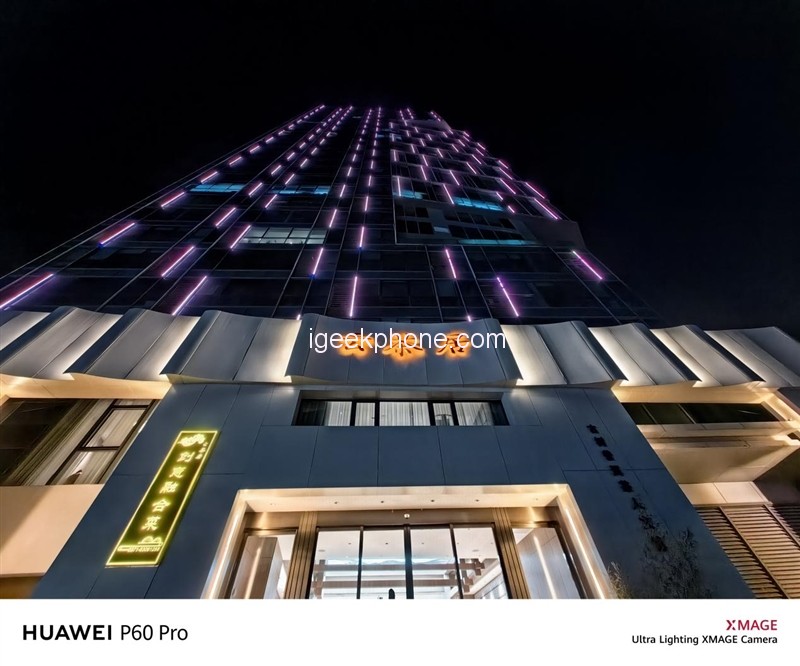

In addition to the color optimization of XMAGE, the alignment of high-standard hardware, such as the condenser lens group, can eliminate more optical defects to the greatest extent and bring a more transparent look and feel.
Ultra Wide Angle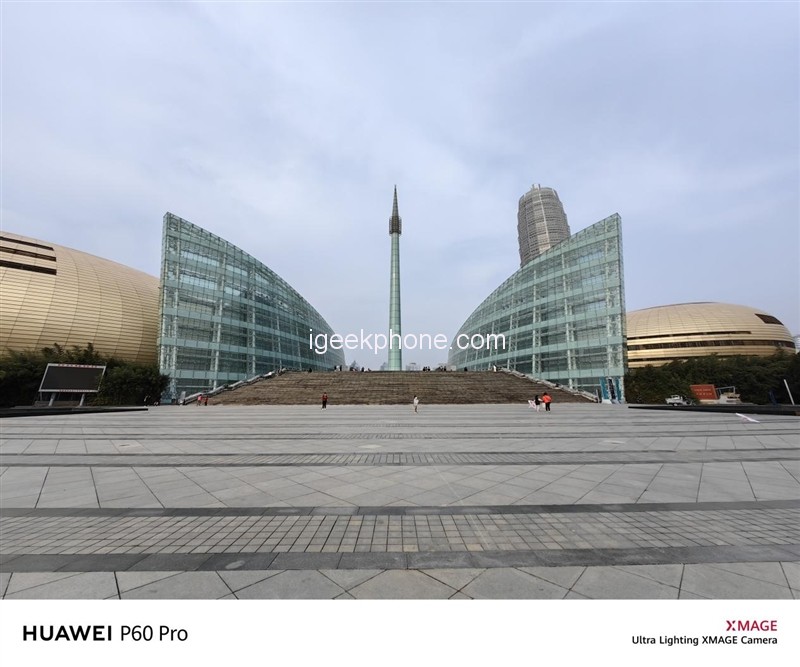
The ultra-wide-angle camera of the Huawei P60 Pro can use software algorithms to eliminate distortion on both sides of the image after shooting. When you zoom in on the edge of the photo and look closely, the picture is not distorted, and the idea is still perfect.
The ultra-wide-angle lens of the Huawei P60 Pro can restore the natural colors in the environment well in the proofs taken during the day and at night. Coupled with anti-distortion software optimization, the overall picture gives people an exceptionally comfortable feeling, especially at night. Under normal conditions, it also has excellent control in the face of direct light.
The primary lens of the Huawei P60 Pro uses a 48-megapixel super-concentrating camera equipped with F1.4~F4.0 ten-stop aperture adjustment, a laser focus sensor, and supports OIS optical image stabilization.
Inside the primary lens, Huawei still follows the tradition of the RYYB photosensitive array and, at the same time, introduces a group of large-aperture high-transmittance lenses, which brings the highest equivalent full-frame aperture of F5.41, far exceeding all previous flagships—cell phone.
The 48-megapixel super-focus night vision telephoto camera, RYYB photosensitive array, and a super-focus telephoto lens group are added inside the lens, which can gather more light. The aperture of F2.1 is also much larger than that of other flagship phones. The telephoto night scene shooting ability of the P60 Pro has been dramatically improved.
At the same time, this telephoto lens supports 3.5x optical zoom and up to 100x digital zoom and can shoot up to 35x ultra-macro images. The telephoto lens will cause a significant lens shake problem when shooting distant objects. For this reason, the Huawei P60 Pro solution is to install a three-axis displacement anti-shake sensor inside the telephoto lens. This sensor can achieve X-Axis, Y-axis, and Z-axis act in three directions simultaneously in exchange for a significant improvement in optical image stabilization performance.
Next, we will distinguish according to the camera and show the image performance of the Huawei P60 Pro through actual samples.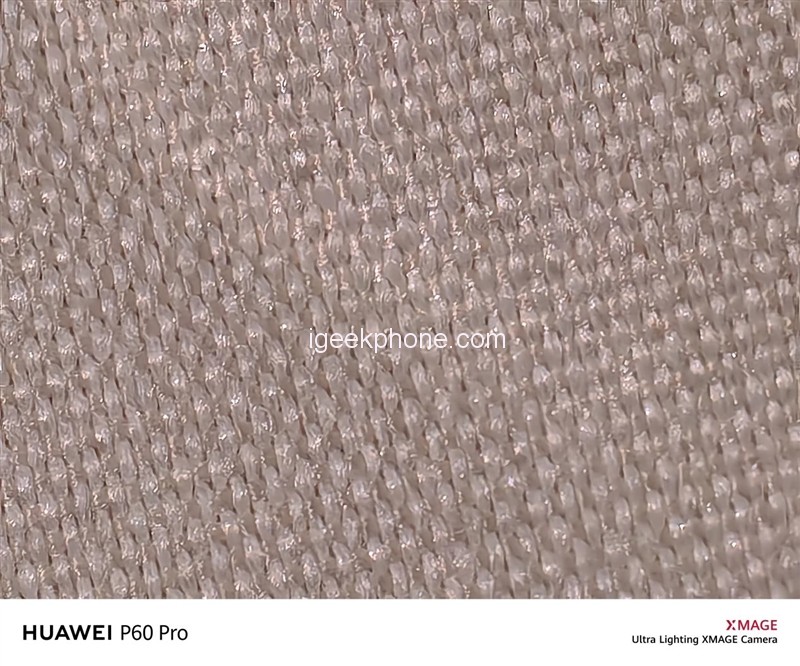
Using the primary camera of the Huawei P60 Pro, the pictures taken in daytime scenes are clean and neat. With the variable aperture, the Huawei P60 Pro can show the object’s original color in various light environments, and the pictures taken give the first impression that the image is transparent and beautiful, with clear light and dark.
Especially the last group of flowers was shot in a backlit scene. In the case of mixed colors, the tolerance can still reach a good state. At the same time, compared with other flagship phones, there is no whitish phenomenon.
Due to the addition of a variable aperture, the lens’s aperture will change with ambient light. In the night scene, the white balance performance is just right. When facing very close bright objects, the light can be controlled in place, and there is no glare. Phenomena such as flare, halo, etc., especially in the last photo, prevent the glow of the lights upstairs in the hot pot restaurant very well. The picture has rich layers and a more three-dimensional effect.
Connectivity
In September last year, in the Huawei Mate50 series, Huawei integrated the new technology of “piercing the sky” for the first time – Beidou satellite communication, becoming the world’s first mass smartphone that supports Beidou satellite messages.
After half a year, in March this year, Huawei’s “Piercing the Sky” technology also ushered in a significant upgrade. The Huawei P60 series took the lead in supporting two-way Beidou satellite communication. This is also the world’s first smartphone that supports two-way Beidou satellite messages.
Not only can it send messages and locations to the outside world without a signal, but it can also even communicate without a signal and receive a reply from the other party. It significantly increased the probability of survival.
Emergency mode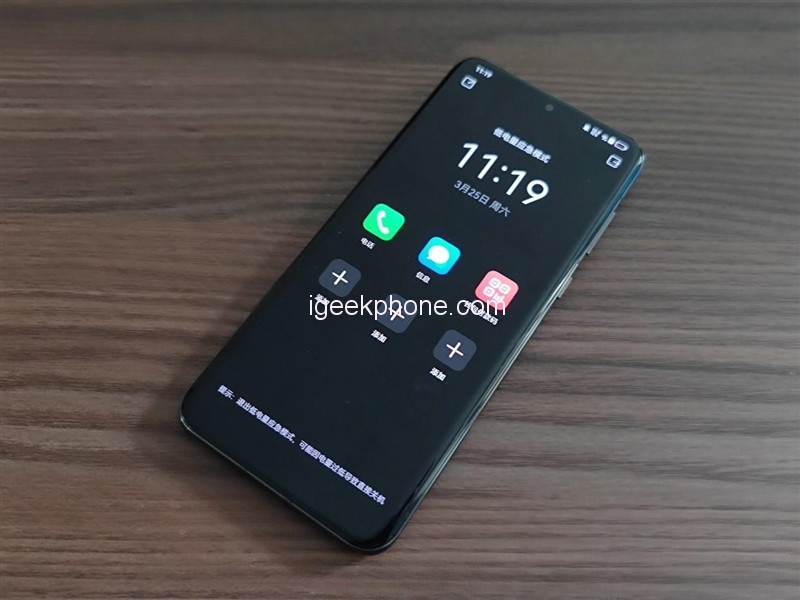
The well-received emergency mode in the Huawei Mate 50 series has also been passed down. Huawei P60 Pro can intelligently aggregate the residual power of the body battery through the energy-concentrating pump technology. When the remaining power is 1%, the phone will automatically enter “emergency mode” at this time, the mobile phone will use the aggregated ability to solve the urgent needs of the user.
Whenever the power of the Huawei P60 Pro is about to run out, the mobile phone will automatically enable emergency mode. At this time, most of the mobile phone functions will be disabled, and only the time, date, and six commonly used APP settings will be kept. Six quick-start applications, including phone calls, text messages, WeChat, Alipay, etc., can be used directly by clicking the icons.
After our call test, the Huawei P60 Pro mobile phone can talk for up to 8 minutes in emergency mode. According to the official introduction, in this mode, emergency operations such as brightening the code 10 times or scanning the code 4 times can be performed at most.
Gaming Performance
In this regard, in the game testing session, we selected two mobile games that can represent medium and high loads and reflected the actual performance of mobile phones under low, medium, and high loads in an office environment with an indoor temperature of 21 degrees Celsius—King of Glory, and “Original God” for testing.
During the test, we adjusted the brightness of the mobile phone screen to 50% and turned off the automatic brightness to ensure the accuracy of the test. We used the highest image quality + highest frame rate for testing in the game and recorded the frame rate, the performance of temperature, and power consumption.
1. Glory of Kings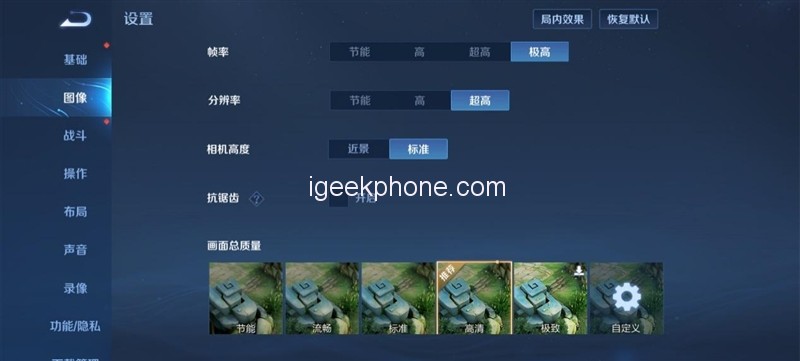
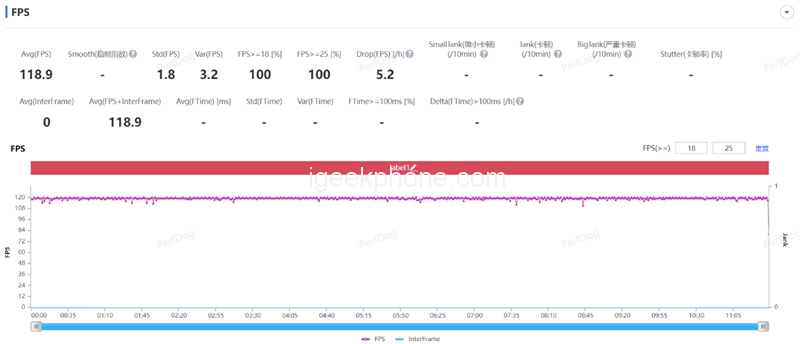
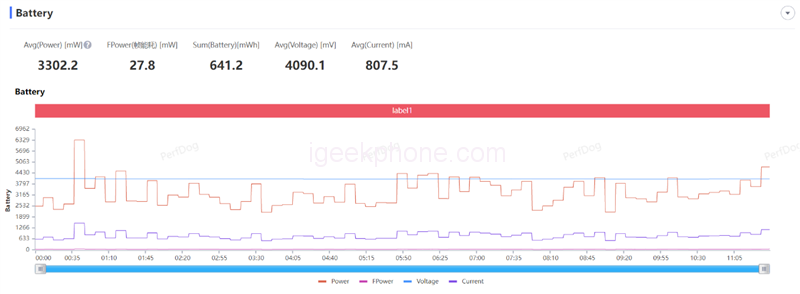
The first is the King of Glory test. In the 120 frame mode, ultra-high resolution + high-definition picture quality can be turned on. After examining nearly 11 minutes in a game, the average frame rate finally stabilized at 118.9 FPS, with an average fluctuation of only 1.8. The overall frame rate is very stable.
The power consumption is about 3.3W, and the frame energy consumption is 27.8mW.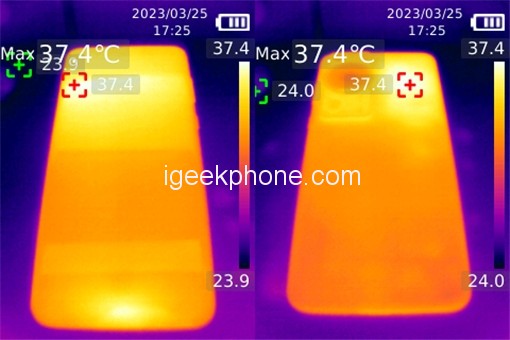
The highest temperature on the front of the fuselage is 37.4 degrees Celsius, and the back of the fuselage is also 37.4 degrees Celsius. You will not feel undeniable heat during the game.
2. Original God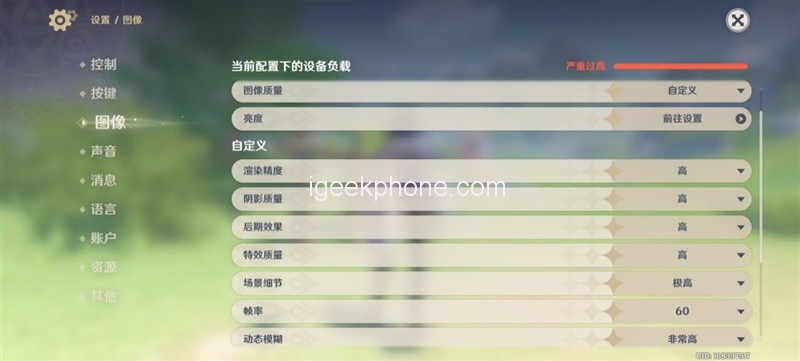
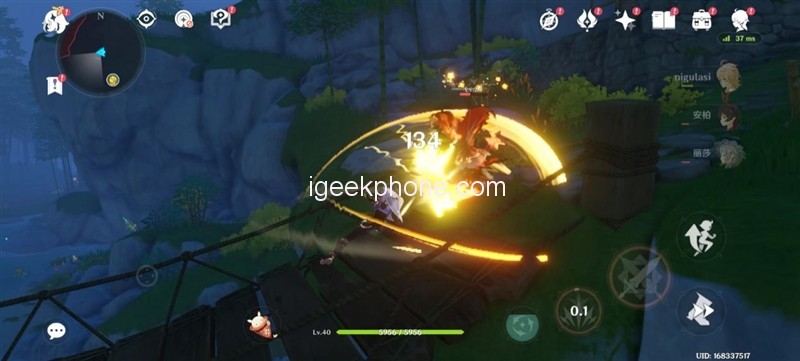 Yuanshen mobile game, in the highest quality + 60 frame mode, run the map + fight monsters test for about 11 minutes; the resolution can be maintained at 845×1869 during the game without reducing the quality and brightness; the average frame rate is stable at 59.5FPS. It seems that Huawei P60 Pro is also perfect for high-load Yuanshen.
Yuanshen mobile game, in the highest quality + 60 frame mode, run the map + fight monsters test for about 11 minutes; the resolution can be maintained at 845×1869 during the game without reducing the quality and brightness; the average frame rate is stable at 59.5FPS. It seems that Huawei P60 Pro is also perfect for high-load Yuanshen.
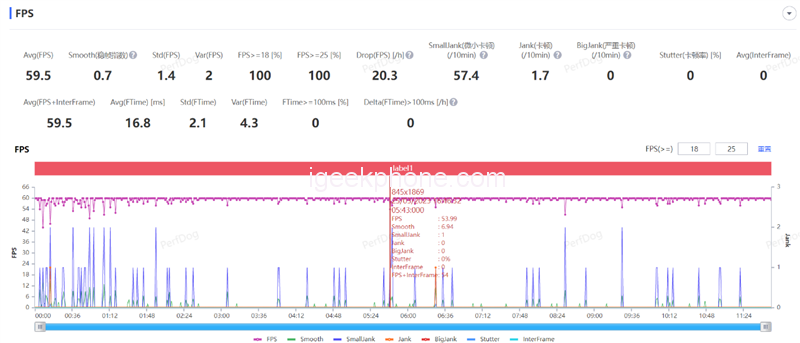
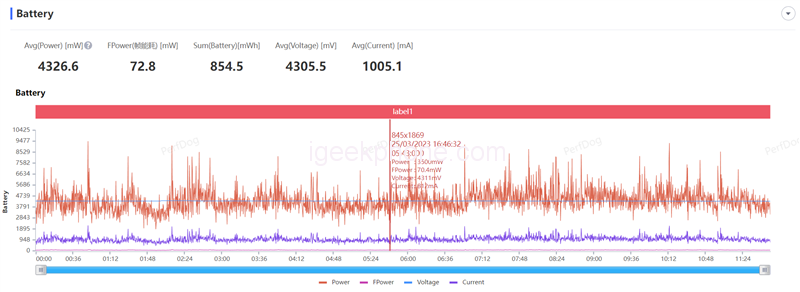
Of course, a smooth game will also bring a higher load. After testing, the average power consumption of the game has reached 4.34W, and the frame energy consumption is 72.8mW, but it is considered an intermediate level in the Snapdragon 8+.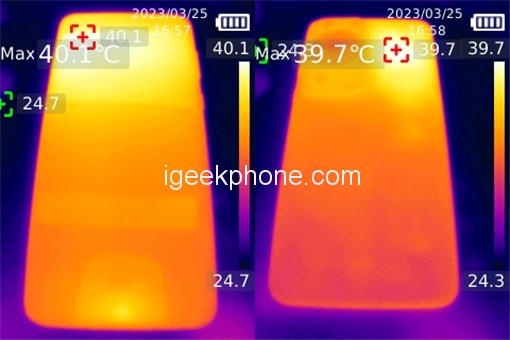
The highest temperature on the front of the fuselage also soared to 40.1 degrees Celsius and 39.7 degrees Celsius on the other side of the fuselage. The high-temperature area is located in the camera area. When running pictures in the game, the thumb area will feel increasingly piled up, but it is not too high—accepted at the bottom.
Battery
Huawei P60 Pro has a built-in 4815mAh capacity battery, which supports up to 88W Huawei wired super fast charging Turbo. When we plug in the charger, the system will prompt us whether to enable Turbo mode.
Charging test
When testing charging, to give full play to the highest charging performance of Huawei P60 Pro, we turned on the Turbo mode for charging.
Charge from 0% to 34% in 10 minutes, charge to 63% in 20 minutes, amount to 89% in half an hour, and fully charge in 38 minutes.
Endurance test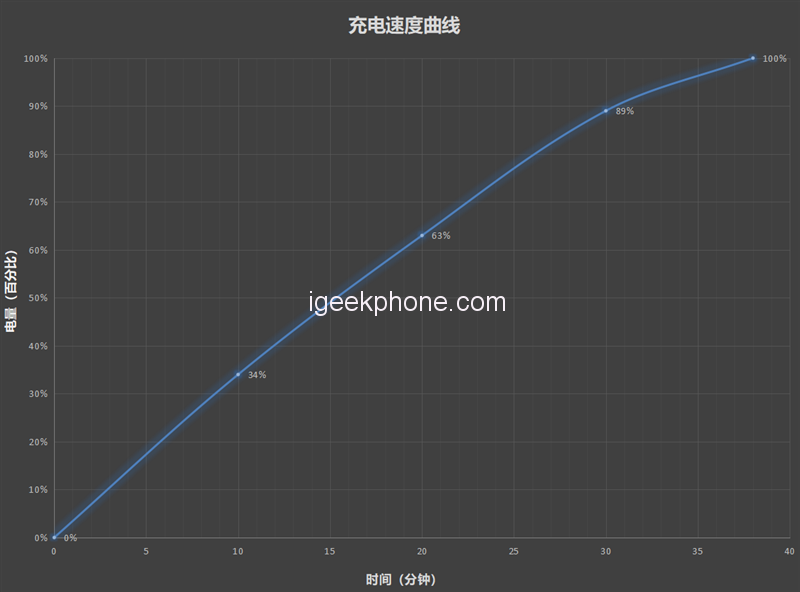
For the battery life, we use a professional battery life test tool – the battery dog produced by Kuai Technology.
In terms of test items, we chose the extreme power battery life test and checked all the test items, including CPU high voltage, CPU multi-threading, AI recognition, picture browsing, video playback, and web browsing to simulate user usage scenarios and restore the whole load to the greatest extent. Infinitely close to the actual power consumption.
We adjusted the brightness of the mobile phone screen to precisely 50%, turned off the automatic brightness, and used the battery dog to test. Finally, it took about 10 hours and 3 minutes to drain the power from 100% to 2%. For such an extensive battery of 4815mAh, It can be regarded as an average battery life level, which can fully meet the intermittent use of users throughout the day.
Verdict
In 2020, Huawei P40 Pro+ amazed the world with the world’s first 10x optical periscope telephoto lens, stacking mobile phone camera hardware to the extreme.
In 2021, the Huawei P50 series reborn with XD Fusion Pro and computational optical system, coupled with a 40-megapixel black and white auxiliary imaging lens, once again proved that without extreme hardware conditions, with years of experience in image tuning and superior performance, The optimization of the mobile phone can also make the imaging capabilities of mobile phones reach the peak.
After nearly a year and a half, the Huawei P60 Pro in 2023 is now innovating and leading at the bottom of the hardware and has achieved several world premieres at the level of mobile phone imaging hardware. Relying on the accumulated experience, the XMAGE imaging brand was created, which has been used twice in Huawei P60 Pro.
1. Super-spotting main camera + night vision telephoto breaks through the bottom line of hardware
Huawei P60 Pro uses a large aperture, high light transmission lens group, and RYYB super sensitive sensor to increase the amount of light entering the lens. The final imaging effect is far beyond the one-inch outsole. Finally, it can abandon the black-and-white auxiliary lens and inherit the Mate50 series. The adjustable aperture makes the lens applicable to a broader range.
On the telephoto lens, a super-concentrating telephoto lens group is added, and with the industry’s giant F2.1 periscope telephoto lens, the telephoto capability of the mobile phone breaks through the limit.
In our tests, the imaging capabilities of the Huawei P60 Pro are not inferior to the 1-inch outsole primary camera. The 3.5x periscope telephoto camera combines various emerging technologies, and the night scene capabilities have undergone earth-shaking changes. It’s time to let the telephoto lens no longer be afraid of the night.
2. No regrets about Beidou’s two-way satellite message communication
Introducing Beidou’s two-way satellite messages has completely changed our perception of mobile phones. As a communication tool, we can communicate with people smoothly no matter where we are instead of just sending messages.
With the blessing of this technology, when we are in a dangerous situation in deserts, oceans, and other uninhabited areas, connecting to satellites to send messages and establishing our location information when the device is offline is crucial for subsequent rescues. Effect.
3. The first 88W wired super fast charging Turbo
Huawei P60 Pro is equipped with 88W wired super fast charging Turbo. After our actual test, it only takes 38 minutes to set the 4815mAh large-capacity battery to recover blood quickly. When charging, you can use the phone when you drink tea. For most of the day, there is no need to worry about power consumption when you are outside.
Over the years, Huawei’s P series has not changed its determination to devote itself to developing high-end imaging. The future development of mobile phone images has paved the way.
On the whole, Huawei P60 Pro is an all-around imaging flagship that Huawei has spared no effort to create. It carries Huawei’s accumulated experience in imaging over the years. Mobile phones have always been the representative works of Huawei’s high-end imaging.
Do not forget to follow us on our Facebook group and page to keep you always aware of the latest advances, News, Updates, review, and giveaway on smartphones, tablets, gadgets, and more from the technology world of the future.










